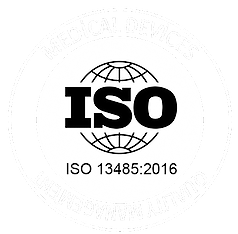
Five Costly Mistakes that Can Sink Your Device Startup - Part II
Translating a groundbreaking concept into a commercially viable medical device requires navigating a complex web of challenges, from securing funding to overcoming stringent regulatory hurdles.
In this two-part post, we review five common mistakes that can derail your medical device startup on the path to commercialization, along with actionable strategies to overcome them.
This is part II of this post. You can find Part I here.
Mistake #4: Underestimating QMS and Documentation Requirements
In the fast-paced world of medical device startups, the focus often leans towards rapid development and getting a groundbreaking product to market first. However, neglecting a crucial element – a robust Quality Management System (QMS) and its associated documentation – can prove to be a costly misstep.
Regulatory bodies like the FDA demand a documented QMS that ensures consistent quality throughout the entire product lifecycle. Think of it as a detailed roadmap demonstrating your unwavering commitment to patient safety and product effectiveness. It allows auditors and regulators to trace every step of your product's development, fostering trust and confidence in your product, while a weak QMS with sparse documentation can result in costly delays and roadblocks.
A well-defined QMS with clear procedures and documented processes isn't just about regulatory compliance. It goes a long way towards building trust and transparency, the cornerstones of market confidence. This transparency unlocks doors to partnerships, attracts investors, and ultimately translates to wider market adoption.
Well-documented quality management procedures also translate to increased operational efficiency. They ensure consistency, minimize errors, and free up valuable resources for innovation. A robust QMS fosters a culture of quality, allowing proactive identification and mitigation of potential issues before they snowball into costly product recalls and reputational damage. It protects your brand, your investment, and your intellectual property.
While a robust QMS and comprehensive documentation require time and attention, they can also provide a strategic differentiator. Prioritizing these efforts from the outset will ensure a smoother regulatory approval, minimize risk, and ultimately, shorten the path to commercial success.
The good news? Establishing a QMS doesn't have to be an overwhelming task, even for startups. Here are some practical tips to keep in mind:
- Invest in Expert Guidance: Seek assistance from consultants and regulatory professionals who can help you navigate QMS implementation effectively.
- Harness Technology: Explore QMS software solutions specifically designed for medical devices to streamline documentation and process management.
- Leverage Partners: You don’t necessarily need to have your own QMS from day one. Instead, find a design partner that integrates QMS into their services.
Mistake #5: Failing to Manage Development Milestones and Cost
Medical device startups are in a constant race to secure the next round of funding to stay afloat. To raise the next round, they must hit performance milestones, which are typically tied to product development, clinical studies, and regulatory approvals.
The ideal milestone acts like a golden ticket, providing enough evidence of progress to secure the next round of funding. But it also needs to be achievable within the startup's limited resources.
Startups that hire people to develop their product commit themselves to substantial recurring costs month after month. This can be a risky proposition, since most medical device entrepreneurs tend to underestimate the development effort required to bring their product to market or even to the next milestone.
Pre-market medical device companies misjudge commercialization timelines by an average of 53%.
Source: Greenlight Guru 2023 MedTech Industry Benchmark Report
As development timelines stretch beyond initial expectations, the company continues to bleed cash. Given this common scenario, it is little wonder that running out of funds before reaching a market-ready product is a recurring pitfall for device startups, often requiring the company to let go of key people they worked hard to recruit.
Cutting costs and downsizing the team can be demoralizing and may lead to a loss of valuable talent. To mitigate these risks, be conservative with your hiring decisions, only bringing on board essential personnel that you know you’ll need for the long-run. Consider leveraging outsourcing strategically to provide flexibility and access to specialized skills while maintaining a predictable cash burn rate. Once your product has cleared regulatory hurdles and is ready for production at scale, you’ll be better prepared to hire additional resources and bring these skills inhouse.
Partnering with a design and development company that provides milestone-based pricing can mitigate the risk of exceeding product budgets. Working with a partner on a fixed price for predetermined milestones is also helpful for controlling scope drift. It makes startup leaders clearly aware of the time and cost that out-of-scope feature development would add to the project. When these tradeoffs are clear, it is easier to make the right decision.
“Our pricing structure allows clients to make informed decisions. They can quickly assess the impact of any change request on both the budget and timeline, without worrying about unexpected costs."
Most design and development contractors will not commit to fixed costs and times, since they are unwilling to assume the risk of overrunning the time and effort they estimated for the project. Only firms with extensive experience in developing similar devices may be willing to commit to a fixed cost project and share the risk with you.
“This was my first experience with milestone-based pricing, and I will never go back to hourly billing. Nocturnal’s process ensures all parties are fully aligned and incentivized for success, and the results speak for themselves."
Alex Cooper, CEO, Stealth Medical Device Company
Final Thoughts: How Can You Avoid These Mistakes?
The road to success for medical device startups is riddled with challenges. However, by understanding and addressing these common pitfalls, you can significantly increase your probability of success.
- Chart a Clear Regulatory Path: Plan early, explore alternative pathways, and seek guidance from experts.
- Prioritize Simplicity: Focus on core functionalities for a smooth regulatory journey and build reliability for patient trust.
- Leverage Existing Knowledge: Learn from past successes, utilize proven designs, and identify transferable know-how to save time and resources.
- Build a Robust QMS: Invest in a documented Quality Management System for trust, efficiency, and smoother regulatory hurdles.
- Manage Milestones and Costs: Hire strategically, consider outsourcing and partnering with a development company offering fixed-cost, milestone-based pricing.
By proactively addressing these challenges, you can navigate the complexities of medical device development and bring your life-saving innovation to market faster.


